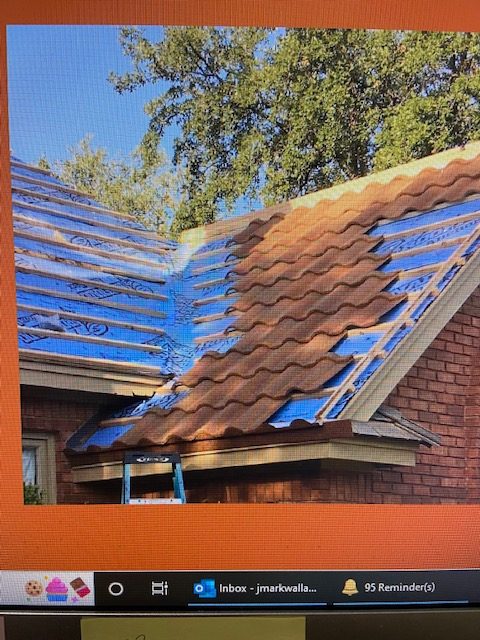When it comes to choosing a roofing material, homeowners and business owners alike often find themselves facing a long list of options—each with unique advantages and trade-offs. Among them, metal roofing continues to grow in popularity, especially for properties in regions prone to severe weather. But is it the right fit for your home or commercial building?
Let’s explore the key factors that make metal roofing a smart investment—and when it might not be the ideal solution for your structure.

What Is Metal Roofing?
Metal roofing refers to a wide range of roofing systems made from metals such as aluminum, steel, copper, and zinc. These roofs can come in various styles, including standing seam panels, metal shingles, corrugated panels, and even tiles designed to mimic traditional materials.
Common metal roofing types include:
- Standing seam: Vertical panels with concealed fasteners
- Metal shingles: Shingle-like appearance with metal performance
- Corrugated metal: Often used for agricultural or industrial buildings
Advantages of Metal Roofing
1. Durability and Longevity
One of the biggest draws of metal roofing is its ability to last. While asphalt shingles typically need replacing every 15–20 years, a metal roof can last 40 to 70 years with proper maintenance.
2. Weather Resistance
Metal roofing excels in harsh environments. It can:
- Withstand winds of up to 140 mph
- Shed snow and rain efficiently
- Resist cracking, shrinking, and eroding
This makes it especially valuable in storm-prone regions or hot, humid climates where other materials degrade quickly.
3. Energy Efficiency
Metal reflects solar radiant heat instead of absorbing it, which can reduce cooling costs by 10–25%. Some metal roofs are also coated with special reflective finishes that increase energy savings.
4. Low Maintenance
Compared to wood, asphalt, or tile, metal roofs require very little upkeep. Occasional inspections, debris removal, and minor repairs are generally all that’s needed.
5. Eco-Friendliness
Metal roofing is often made from recycled materials and is 100% recyclable at the end of its life. It’s one of the most sustainable roofing choices available.
Potential Drawbacks to Consider
While metal roofing has many advantages, it’s not perfect for every property or situation. Consider the following:
1. Higher Upfront Cost
The biggest obstacle for many is the price tag. Metal roofing can cost two to three times more than traditional asphalt shingles.
However, when you factor in its longevity and lower maintenance, it often pays for itself over time.
2. Noise Levels
Rain or hail hitting a metal roof can be loud, especially without proper insulation. While modern systems address this with underlayment and attic space, it’s something to consider for noise-sensitive settings.
3. Expansion and Contraction
Metal roofs expand and contract with temperature changes. Poor installation can lead to fastener issues or panel warping over time.
4. Denting Risk
Although metal is strong, soft metals like aluminum and copper can dent from heavy hail or falling branches.
Is Metal Roofing Right for Homes?
Metal roofing is an excellent choice for many homeowners, particularly those who:
- Live in areas with high winds, heavy rain, or wildfires
- Plan to stay in the home long-term
- Want to reduce energy bills
- Prefer a low-maintenance, eco-friendly solution
Modern metal roofs come in a wide range of colors and styles, including those that mimic shingles, tiles, or slate. This makes them suitable even for traditional or historical home designs.
Is Metal Roofing Suitable for Businesses?
Absolutely. Commercial buildings benefit from metal roofing due to:
- Longevity that reduces long-term operational costs
- Fire resistance and improved safety
- Custom branding opportunities through color and design
Metal roofing is especially ideal for:
- Warehouses
- Retail centers
- Schools and municipal buildings
- Medical and office facilities
What Does the Installation Process Involve?
Metal roofing installation must be done by experienced professionals to avoid issues like leaks or thermal movement. Key steps include:
- Measuring and assessing your roof’s condition
- Removing old roofing (in most cases)
- Installing underlayment and ventilation systems
- Mounting panels or shingles with precision
Choosing a licensed and insured contractor with a proven portfolio in metal roofing is critical to ensuring long-term performance.
Real-World Results: A-Squared Roofing’s Metal Projects
A-Squared Roofing has completed numerous successful metal roofing projects across residential and commercial properties. Their team uses high-quality materials and precision installation to ensure:
- Long-term leak protection
- Attractive curb appeal
- Increased property value
Their metal roofing solutions are built to withstand Florida’s toughest storms while providing energy savings and peace of mind.
Final Thoughts: Is It Right for You?
If you’re looking for a long-lasting, energy-efficient, and weather-resistant roofing solution, metal roofing is definitely worth considering. While the initial investment may be higher, the return in durability, aesthetics, and lower energy costs can be significant.
For homeowners and business owners alike, metal roofing can be the smartest choice—provided it fits your budget, style, and climate needs.
Ready to explore metal roofing for your home or business?
Contact A-Squared Roofing to schedule a consultation. Their experienced team will walk you through material options, cost estimates, and design choices to help you make the best decision for your property.